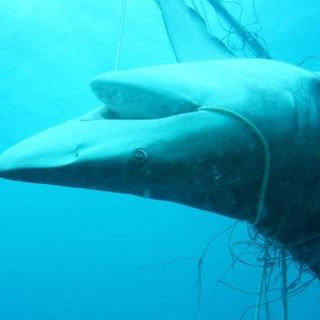The well-preserved bones of a woolly mammoth dating back 10,000 years were discovered last week in northern Siberia.
With Siberia experiencing a record-breaking heatwave this year, the melting permafrost has exposed the remains of the creature that died thousands of years ago, and had been buried underneath frozen soil since. The discovery was made when reindeer herders stumbled upon these bones along the shore of the Yamalo-Nenets autonomous district.
Soon after the discovery, a team of scientists flew in to dig deeper. So far, they have been able to successfully retrieve part of the mammoth’s skull, several ribs and foreleg bones — including some with soft tissue still attached to them. “There is a complete head, ribs, various other bones as well as fragments of feet, soft tissues and pelt. Judging by the pictures this was a young mammoth, but we’ll have to wait for tests to give the exact age,” Dmitry Frolov, director of the Arctic Research Centre, told Siberian Times.
Related on The Swaddle:
Russia Declares State of Emergency As Melting Permafrost Causes Massive Arctic Circle Oil Spill
With the permafrost thawing rapidly due to global warming, several remains have been discovered over the last few years: an extinct cave lion cub in 2017, an 18,000-year-old prehistoric puppy in 2018, and a 42,000-year-old foal and 32,000-year-old wolf head in 2019.
But, what sets this discovery apart is that it is unusual to find so many bones belonging to a single species, and to know where they came from, Yevgeniya Khozyainova, a paleontologist at the local Shemanovsky Institute in Salekhard, told Reuters. And, “whenever there is soft tissue left behind, it is valuable material to study,” she added.
However, while the scientists are intrigued by the discovery and the research potential it holds, the fact that global warming is causing permafrost to melt rapidly, leading to these discoveries, is alarming. Permafrost contains large amounts of frozen carbon. When it melts due to rising temperatures, this carbon flows through rivers and streams, eventually re-joining the atmosphere. This exacerbates the global warming that led the permafrost to melt, in the first place. “Some of our cities were built north of the Arctic Circle, on the permafrost. If it begins to thaw, you can imagine what consequences it would have. It’s very serious,” Russian President Vladimir Putin had said.




